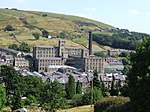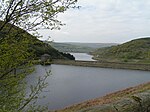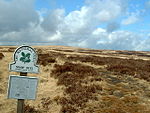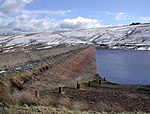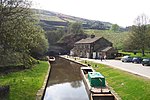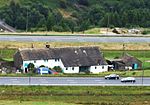Marsden railway station
1849 establishments in EnglandDfT Category F1 stationsFormer London and North Western Railway stationsMarsden, West YorkshireRailway stations in Great Britain not served by their managing company ... and 4 more
Railway stations in Great Britain opened in 1849Railway stations in KirkleesRailway stations served by TransPennine ExpressUse British English from February 2018

Marsden railway station serves the village of Marsden near Huddersfield in West Yorkshire, England. The station is on the Huddersfield Line, operated by Northern and is about 7 miles (11 km) west of Huddersfield station. It was opened in 1849 by the London & North Western Railway and is the last station before the West Yorkshire boundary with Greater Manchester. The station is operated by Northern Trains, but only Transpennine Express trains call here.
Excerpt from the Wikipedia article Marsden railway station (License: CC BY-SA 3.0, Authors, Images).Marsden railway station
Dirker Drive, Kirklees
Geographical coordinates (GPS) Address Nearby Places Show on map
Geographical coordinates (GPS)
| Latitude | Longitude |
|---|---|
| N 53.60323 ° | E -1.9307 ° |
Address
Dirker Drive
HD7 6AX Kirklees
England, United Kingdom
Open on Google Maps
